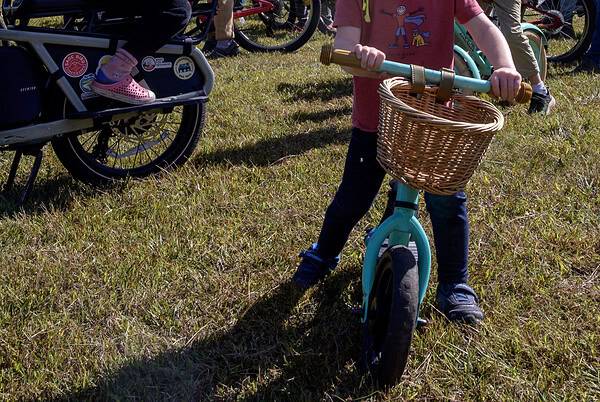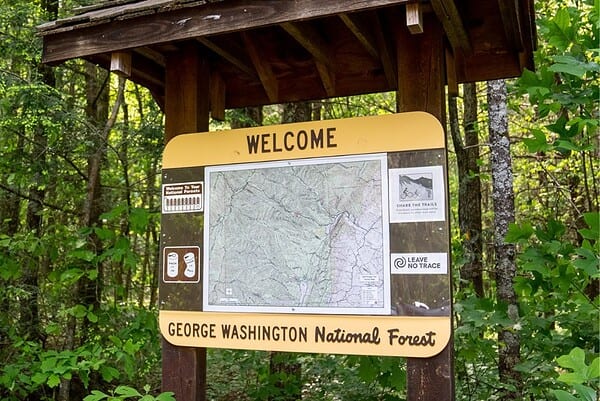![]() Rehabilitated tread above the switchback, at the top of the photo is the old location of the stone steps depicted below.
Rehabilitated tread above the switchback, at the top of the photo is the old location of the stone steps depicted below.
![]() Christian Canary of the U.S. Forest Service, Thomas Jenkins of the Shenandoah Valley Bicycle Coalition, Synthia Waymack from the Virginia Department of Conservation and Recreation, and Ethan Jenkins the next generation of trail users! They are all standing at the new and improved switchback on the Wild Oak Trail
Christian Canary of the U.S. Forest Service, Thomas Jenkins of the Shenandoah Valley Bicycle Coalition, Synthia Waymack from the Virginia Department of Conservation and Recreation, and Ethan Jenkins the next generation of trail users! They are all standing at the new and improved switchback on the Wild Oak Trail
![]() Another view of the rehabilitated Switchback. As you can see from pictures below, the switchback was previously unridable for trail users on bikes and experienced chronic shortcutting by trail users on foot.
Another view of the rehabilitated Switchback. As you can see from pictures below, the switchback was previously unridable for trail users on bikes and experienced chronic shortcutting by trail users on foot.
![]() Looking down the trail with the switchback in the distance. This rehabilitated section of trail was regraded and the precarious stone steps were removed. This area should no longer experience the erosion problems that it once had. This is a result of the large rock armored rolling grade dip that was placed above this section to prevent an especially active underground spring from bypassing an existing culvert, subsequently sending water down the trail bed.
Looking down the trail with the switchback in the distance. This rehabilitated section of trail was regraded and the precarious stone steps were removed. This area should no longer experience the erosion problems that it once had. This is a result of the large rock armored rolling grade dip that was placed above this section to prevent an especially active underground spring from bypassing an existing culvert, subsequently sending water down the trail bed.
![]() Rock steps with evident erosion before the regrading and installation of armored grade reversal to address this problem.
Rock steps with evident erosion before the regrading and installation of armored grade reversal to address this problem.
![]() Old trail bed that was experiencing terrible erosion from the spring above. In the background you can see the stone steps and the erosion to their right where water was getting onto the trail.
Old trail bed that was experiencing terrible erosion from the spring above. In the background you can see the stone steps and the erosion to their right where water was getting onto the trail.
![]() Old Switchback experienced chronic shortcutting and was unridable for cyclists. The new switchback involved the construction of a large rock retaining wall to support a much larger platform for the turn.
Old Switchback experienced chronic shortcutting and was unridable for cyclists. The new switchback involved the construction of a large rock retaining wall to support a much larger platform for the turn.
![]() Looking down the stone steps at the eroded trail bed before any work was completed
Looking down the stone steps at the eroded trail bed before any work was completed
![]() U.S. Forest Service staff checking out the condition of the trail prior to the SVBC grant work
U.S. Forest Service staff checking out the condition of the trail prior to the SVBC grant work





